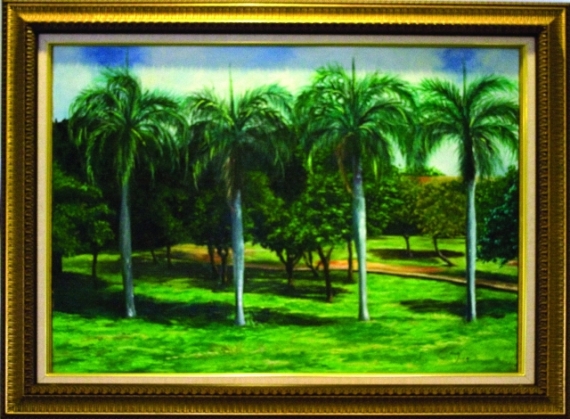Edmy Ortiz
(told by Mayte Martínez '10)
Edmy Ortiz was
born and raised in the Dominican Republic, where she studied painting while
earning a degree in architecture. In 2003, Edmy left her homeland for the
United States. In Worcester, she first took a few art courses at the Worcester
Art Museum. There, she became conscious of a major difference between Latin
American and North American educational approach to art. The discipline in the
Dominican Republic is stricter and more structured in order to allow the
student to define themselves as an artist with more
strength.
When Edmy was learning about art
in the Dominican Republic, she was pushed to master painting with acrylics,
watercolor, and pastels before settling on oil paint. Edmy chose oils because
she felt the colors were more intense, more able to capture the powerful colors
of everyday life in Latin American culture. In America, by comparison, an art
course usually begins and ends with the same medium. For example, in a drawing
course, you will probably work with pencil and maybe some paint but more than
likely the course will begin and end with charcoal.

Reprinted by permission of Edmy Ortiz
© Edmy Ortiz
In her work, Edmy
is trying to break the stereotypes people have about Latin Americans and show
the beauty and origins of traditions that we still preserve. One of the things
that stood out to me in her work is the revelation of the simplicity of life
and how Hispanics are not only living this simple life, they are content with
it. For many people, especially Americans, it can be bizarre and surprising to
see that some do not aspire to have the newest device, car or a lavish home.
Many Hispanics, including those in the Dominican Republic, are comfortable
living in their small homes and cultivating the land. They have no need for a
flat screen television or internet and computers. I saw this when I went to my
mother's small town in El Salvador and I was impressed to see Edmy's work grasp
this concept and illustrate it so
beautifully.
Another feature of Edmy's
work that I was drawn to was that the people in her work are faceless. When I
asked Edmy why she chose to keep them unidentifiable, she had two answers:
first, that without a face, the person was universal, allowing anybody to
relate to the piece and not tie it down to a single individual. Second, her
open-ended individuals are a channeling of her homeland. Edmy explained to me
that in the Dominican Republic, Edmy saw a series of ceramic sculptures of
women who are selling flowers who are
faceless.
Currently, Edmy is working on a
series of paintings that relate to Spain for the Casa de España exhibit
in the Dominican Republic. As a flamenco dancer herself, some of Edmy's pieces
are about flamenco dance, while a few others are about Spanish
bullfights.
¤ ¤
¤
Mayte Martínez's work is featured
on the cover of this issue. Her biography appears here. |